
HeroQuest, sometimes written as Hero Quest, is an adventure board game created by Milton Bradley in conjunction with the British company Games Workshop. The game was loosely based around archetypes of fantasy role-playing games: the game itself was actually a game system, allowing the gamemaster to create dungeons of their own design using the provided game board, tiles, furnishings and figures. The game manual describes Morcar/Zargon as a former apprentice of Mentor, and the parchment text is read aloud from Mentor's perspective. Several expansions were released, each adding new tiles, traps, artifacts, and monsters to the core system.

Dungeon Keeper 2 is a strategy game developed by Bullfrog Productions and published by Electronic Arts in 1999 for Microsoft Windows. The sequel to Dungeon Keeper, the player takes the role of a 'dungeon keeper', building and defending an underground dungeon from the would-be heroes that invade it, as well as from other keepers. In the campaign mode, the player is charged with recovering the portal gems from each area in order to open a portal to the surface. The player can also construct a dungeon without strict objectives, and multiplayer is supported over a network.
Warhammer Quest is a fantasy dungeon, role-playing adventure board game released by Games Workshop in 1995 as the successor to HeroQuest and Advanced HeroQuest, set in its fictional Warhammer Fantasy world. The game focuses upon a group of warriors who join together to earn their fame and fortune in the darkest depths of the Old World.
Advanced HeroQuest is a board game published by Games Workshop in 1989, a sequel to HeroQuest.

Ultima, later known as Ultima I: The First Age of Darkness or simply Ultima I, is the first game in the Ultima series of role-playing video games created by Richard Garriott, originally released for the Apple II. It was first published in the United States by California Pacific Computer Company, which registered a copyright for the game on September 2, 1980 and officially released it in June 1981. Since its release, the game has been completely re-coded and ported to many different platforms. The 1986 re-code of Ultima is the most commonly known and available version of the game.

Deadly Rooms of Death (DROD) is a computer puzzle game. It was created by Erik Hermansen in 1996 and has been regularly extended since then. The original version of the game published by Webfoot Technologies is no longer available. In 2000 the author reacquired the rights to DROD from Webfoot and released the source code; he continues the support and development as "Caravel DROD".
The Eggerland (エッガーランド) series consists of several puzzle games developed by HAL Laboratory. Its first release was in 1985 for MSX computer systems. Many titles were made in the series and the gameplay is almost exactly the same in every game as well. Only a few changes were made over the years.
Betrayal at House on the Hill is a board game published by Avalon Hill in 2004, designed by Bruce Glassco and developed by Rob Daviau, Bill McQuillan, Mike Selinker, and Teeuwynn Woodruff. Players all begin as allies exploring a haunted house filled with dangers, traps, items, and omens. As players journey to new parts of the mansion, room tiles are chosen at random and placed on the game board; this means that the game is different each session. Eventually the "haunt" begins, with the nature and plot of this session's ghost story revealed; one player usually "betrays" the others and takes the side of the ghosts, monsters, or other enemies, while the remaining players collaborate to defeat them.
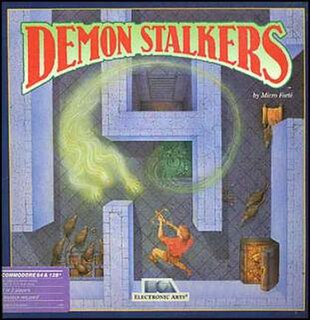
Demon Stalkers: The Raid on Doomfane is a top-down action, role-playing video game. It was released in 1987 for the Commodore 64 and in 1989 for IBM PC compatibles. It's a dungeon crawler based on killing monsters during the descent. A sequel, Fire King, released for the same platforms plays in a similar style.
The Dungeons & Dragons Basic Game is an introductory version of Dungeons & Dragons (D&D) role-playing game packaged in the form of a board game. The original game was released in 2004 by Wizards of the Coast and was designed by Jonathan Tweet, one of the D&D 3rd edition designers. A new version of this game was released in September 2006.
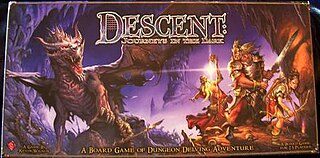
Descent: Journeys in the Dark is a two to five player high fantasy dungeon crawl published by Fantasy Flight Games in 2005. Descent was designed and produced by Kevin Wilson. The game is based on an improved version of the mechanics of FFG's licensed Doom: The Boardgame. In Descent, players take the roles of adventurers who delve into underground complexes in search of treasure. One player takes the role of the Overlord, who controls the enemies and plays cards to hinder the hero players. Descent differs from other games in the genre in that the Overlord player's goal is to win by exhausting the other players of victory points, rather than merely to facilitate play. The Overlord's resources are limited by the rules of the game, which require them to hoard and expend "threat" points, which are generated in response to the hero players' actions, in order to hamper the other players and to bring out additional monsters to defeat them. This mechanism is very much reminiscent of The Lord of the Rings when playing with the Sauron optional expansion.

Dungeonquest is a fantasy adventure board game originally published in Sweden in 1985 by Alga AB as Drakborgen, and subsequently published in English by Games Workshop in 1987.

Dungeon! is a 1975 adventure board game designed by David R. Megarry, Gary Gygax, Michael Gray, Steve Winter, and S. Schwab, published by TSR, Inc. Dungeon! simulates some aspects of the Dungeons & Dragons (D&D) role-playing game, which was released in 1974, although Megarry had a prototype of Dungeon! ready as early as 1972.
Deep Dungeon (ディープダンジョン) is a series of role-playing video games developed by HummingBirdSoft. The first two installments were released on the Family Computer Disk System by Square's label DOG; the third one was released on the regular Family Computer by Square directly and the final one by Asmik.

Monster House is a third-person shooter survival horror video game developed by Artificial Mind and Movement and published by THQ. The game is based on the 2006 animated film of the same name. The game was met mixed reception.
Mighty Warriors is an adventure board game created by Games Workshop in 1991 and set in the Warhammer Fantasy fictional universe. The core rules allowed players to explore dungeons, which were randomly generated, and fight monsters, also randomly generated. This was a simplified version of Advanced Heroquest.
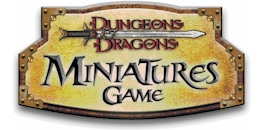
The Dungeons & Dragons Miniatures Game is a collectible miniatures game played with pre-painted, plastic miniature figures based on characters and monsters from the Dungeons & Dragons game. The figures are 30mm in scale. Produced by Wizards of the Coast, the Dungeons & Dragons Miniatures line is composed of 20 loosely themed sets that were released roughly every four months since the line was launched in 2003 until its cancellation in 2011.
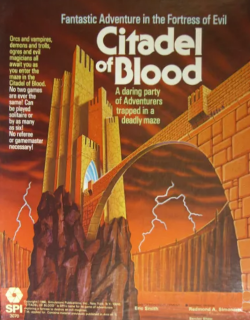
Citadel of Blood, subtitled "Fantastic Adventure in the Fortress of Evil". is a dungeon-crawl board game published by Simulations Publications, Inc. (SPI) in 1980.

Dungeon Tiles is a supplement published by Task Force Games in 1980 for fantasy role-playing games.
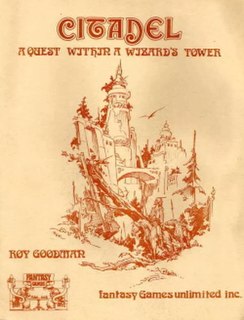
Citadel: A Quest Within a Wizard's Tower is a fantasy board game published in 1976 by Fantasy Games Unlimited.














